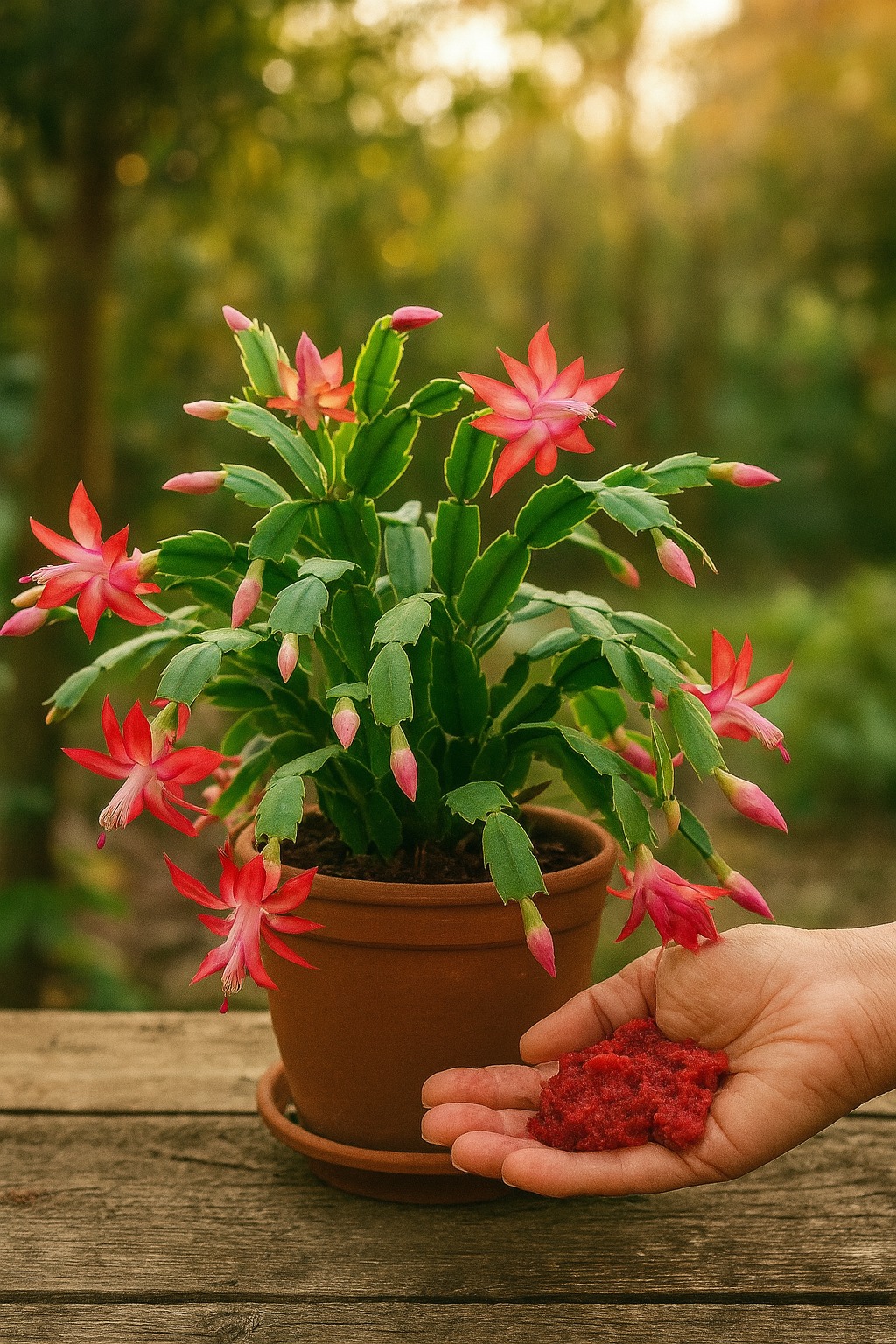Christmas cacti bloom in response to shorter daylight hours and cooler temperatures. Many growers miss out on blooms because they don’t provide the proper conditions during the pre-bloom period.
How to trigger blooms:
Provide 12–14 hours of darkness each night for about six weeks in the fall.
Maintain nighttime temperatures between 50–55°F (10–13°C).
Reduce watering slightly during this pre-bloom phase.
5. Frequent Moving or Rotating
Once a Christmas cactus sets buds, moving it to a new location—even rotating it—can cause the plant to drop its buds before blooming.
Tip:
Keep the plant in a stable location once buds appear.
Avoid drafts and sudden temperature shifts.
6. Overfeeding
Too much fertilizer, or fertilizing at the wrong time, can result in excessive leaf growth with few or no flowers. Like many houseplants, the Christmas cactus has specific nutritional needs and responds best to balanced feeding during its active growing period.
Fertilize smartly:
Feed once a month from spring to late summer with a balanced liquid fertilizer diluted to half strength.
Stop fertilizing in early fall to prepare the plant for blooming.
7. Underfeeding
On the other hand, neglecting to feed your Christmas cactus at all can lead to pale leaves and poor flowering. While it doesn’t need heavy fertilization, some nutrients are necessary for robust growth and bloom production.
Best practice:
Use a well-balanced fertilizer or a blend that includes micronutrients like magnesium and calcium.
8. Ignoring Repotting Needs
Christmas cacti prefer to be slightly root-bound, but after a few years, they may become too crowded, which can affect their overall health and ability to bloom.
When to repot:
Every 2–3 years, ideally in spring after blooming ends.
Choose a container only slightly larger than the root ball and refresh the soil.
9. Poor Humidity
In their native habitat, Christmas cacti thrive in humid environments. Low indoor humidity, especially during winter when heaters are running, can cause the plant to dry out or become stressed.
Humidity tips:
Mist the plant occasionally or place it near a humidifier.
Group it with other plants to increase ambient humidity.
Place the pot on a pebble tray filled with water (ensure the pot isn’t sitting in water directly).
10. Neglecting Pest Control
While generally resistant to pests, Christmas cacti can occasionally suffer from infestations like spider mites, mealybugs, or fungus gnats.
Stay vigilant by:
Checking the undersides of leaves regularly.
Isolating new plants before placing them near others.
Treating early with neem oil or insecticidal soap if pests appear.
Final Thoughts
The Christmas cactus is a rewarding houseplant that, with the right care, can bloom beautifully year after year—even for decades. Avoiding these common mistakes can mean the difference between a struggling plant and one that thrives with healthy green growth and brilliant winter blooms.
By providing the right environment, a consistent care routine, and a little seasonal adjustment, your Christmas cactus can remain a highlight in your indoor garden for many seasons to come.
ADVERTISEMENT

